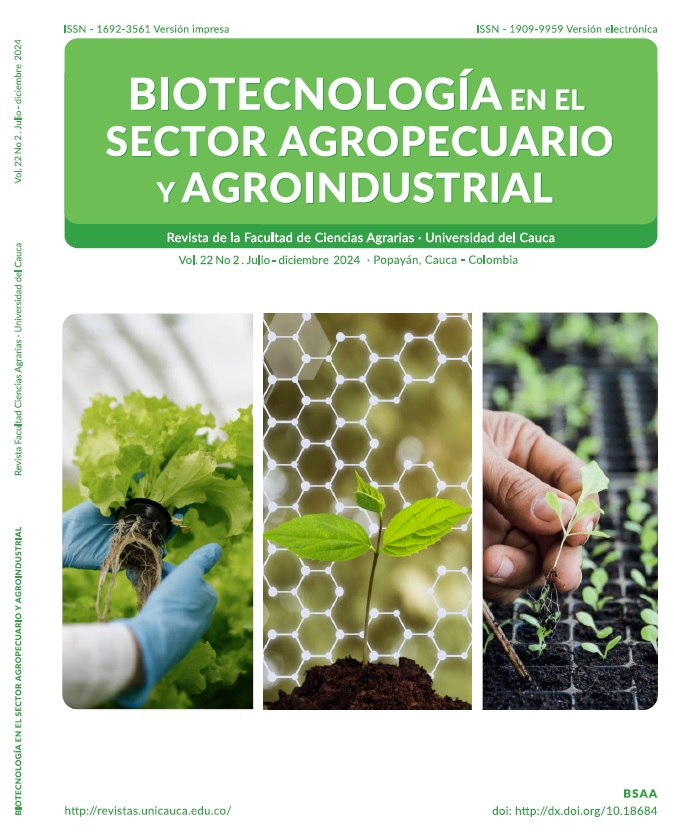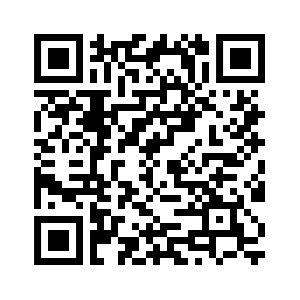Análisis del consumo de bebidas gaseosas en estudiantes de Nutrición y Dietética de la Universidad del Sinú, Colombia
Resumen
En la actualidad existe un creciente interés por el estudio del consumo de bebidas gaseosas y los efectos perjudiciales que estas generan a la salud. El mayor consumo de bebidas gaseosas se presenta en la población juvenil perteneciente a instituciones de educación, lo que ha generado que los estudiantes universitarios sean el principal foco de estudio, debido a la vulnerabilidad nutricional de esta población durante su formación académica. Por lo tanto, el objetivo de este estudio fue analizar el consumo de bebidas gaseosas en estudiantes de la Escuela de Nutrición y Dietética de la Universidad del Sinú. Para la recopilación de la información se implementó un cuestionario de caracterización sociodemográfica y se investigaron variables como género, edad, estrato socioeconómico, nivel de conocimiento sobre gaseosas, actitud hacia el consumo de gaseosas, marca de gaseosa preferida y características antropométricas (peso y talla), con base a esta última información se determinó el Índice de Masa Corporal (IMC), adicionalmente se investigó la frecuencia de consumo y se relacionó con cada uno de los factores anteriores. Los datos obtenidos fueron analizados utilizando un análisis ANOVA y un test HSD Tukey. Los resultados evidenciaron que a mayor frecuencia de consumo incrementa el peso y que el género, el estrato, el nivel de conocimientos, la actitud y la marca incidían en la frecuencia de ingesta de bebidas gaseosas, lo que permitió concluir que estos factores influyen en la frecuencia de consumo y por ende en la salud.
Descargas
Asuntos:
Alimentos, Alimentación, espero que sea revisado prontoDisciplinas:
Alimentos y bebidas, Calidad de alimentos, NutriciónLenguajes:
EspañolReferencias bibliográficas
ALDANA-PARRA, FANNY. La doble carga de la malnutrición y nuestra responsabilidad como profesionales dedicados a la nutrición. Revista de Nutrición Clínica y Metabolismo, v. 3, n. 2, 2020, p11-12. https://doi.org/10.35454/rncm.v3n2.198
AL-HADRAWY, S. M; JAWAD, S. M. Harmful effects of chronic consumption of soft drinks on the bone metabolism of laboratory female rats. Journal of Natural Science, Biology and Medicine, v. 13, n. 1. 2022. http://dx.doi.org/10.4103/jnsbm.JNSBM_13_1_11
ALTHUNIBAT, OSAMA; MOHAMMED SAGHIR, SULTAN; ALADAILEH, SALEEM; ALRAWADEH, ATIKA; AL-AREEFI, MAHMOUD; ALGHONMEEN, REHAM; OBAIDAT, HEBA. Distribution and association of weight-loss diet programs with body mass index and health status among students at Al-Hussein Bin Talal University, Jordan. Electronic Journal of General Medicine, v.19, n. 6, 2022, e414.https://doi.org/10.29333/ejgm/12424
AZUMA, S.; QUARTEY, N.; OFOSU, I. Sodium benzoate in non-alcoholic carbonated (soft) drinks: Exposure and health risks. Scientific African, v. 10, 2020, e00611.https://doi.org/10.1016/j.sciaf.2020.e00611
AZZEH, F.S.; HAMOUH, A.E. Predictors of sugar-sweetened carbonated beverage consumption and its effect on adiposity parameters of female Saudi students. Medicine, v. 101, 2022, p49. https://doi.org/10.1097/MD.0000000000031983
BAWADI, HIBA; KHATAYBEH, TOQA; OBEIDAT, BAYAN; KERKADI, ABDELHAMID; TAYYEM, REEMA; BANKS, ANGELA; SUBIH, HADIL. Sugar-sweetened beverages contribute significantly to college students’ daily caloric intake in Jordan: soft drinks are not the major contributor. Nutrients, v. 11, n. 5, 2019, e1058. https://doi.org/10.3390/nu11051058
BEAUDRY, K.M.; LUDWA, I.A.; THOMAS, A.M.; WARD, W.E.; FALK, B.; JOSSE, A.R. First-year university is associated with greater body weight, body composition and adverse dietary changes in males than females. PloS one, v. 14, n. 7, 2019, e0218554.https://doi.org/10.1371/journal.pone.0218554
CHUA, JU; KEE, DAISY; ALHAMLAN, HADEEL; LIM, PEI; LIM, QI; LIM, XIN; SINGH, NIHARIKA. Challenges and solutions: A case study of Coca-Cola company. Journal of the Community Development in Asia (JCDA), v. 3, n. 2, 2020, p 43-54.https://api.semanticscholar.org/CorpusID:219522069
CRUZ-MUÑOZ, VANESSA; URQUIZU-ROVIRA, MARTA; VALLS-IBAÑEZ, VICTORIA; MANRESA-DOMÍNGUEZ, JOSEP-MARIA; RUIZ-BLANCO, GERARD; URQUIZU-ROVIRA, MONSERRAT; TORAN-MONSERRAT, PERE. Consumption of soft, sports, and energy drinks in adolescents. The BEENIS study. Anales de Pediatría (English Edition), v. 93, n. 4, 2020, p 242-250. https://doi.org/10.1016/j.anpede.2020.01.010
DEOSSA, GLORIA; RESTREPO, FERNANDO; RODRÍGUEZ, HOLMES. Caracterización del consumo de bebidas en habitantes de la ciudad de Medellín, Colombia. Revista chilena de nutrición, v. 46, n. 4, 2019, p 451-459. http://dx.doi.org/10.4067/S0717-75182019000400451
GHOZAYEL, M.; GHADDAR, A.; FARHAT, G.; NASREDDINE, L.; KARA, J.; JOMAA, L. Energy drinks consumption and perceptions among University Students in Beirut, Lebanon: A mixed methods approach. PloS one, v. 15, n. 4, 2020, e0232199.https://doi.org/10.1371/journal.pone.0232199
GKETSIOS, I.; TSIAMPALIS, T.; KANELLOPOULOU, A.; VASSILAKOU, T.; NOTARA, V.; ANTONOGEORGOS, G.; KOSTI, R.I. The Synergetic Effect of Soft Drinks and Sweet/Salty Snacks Consumption and the Moderating Role of Obesity on Preadolescents’ Emotions and Behavior: A School-Based Epidemiological Study. Life, v. 3, n. 3, 2023, p 633.https://doi.org/10.3390/life13030633
GONZÁLEZ, Y.G.; VALLE, J.M.T.; OLIVEROS, R.O.; ROSALES, L.G.; SALDÍVAR, O.P. Daños a la salud por consumo adictivo de Coca Cola. Revista del Hospital Psiquiátrico de La Habana, v. 14, n. 3. 2019.https://revhph.sld.cu/index.php/hph/article/view/39
HU, H.; SONG, J.; MACGREGOR, G.A.; HE, F.J. Consumption of Soft Drinks and Overweight and Obesity Among Adolescents in 107 Countries and Regions. JAMA Network Open, v. 6, n. 7, 2023.https://doi:10.1001/jamanetworkopen
JACOB, L.; STUBBS, B.; KOYANAGI, A. Consumption of carbonated soft drinks and suicide attempts among 105,061 adolescents aged 12–15 years from 6 high-income, 22 middle-income, and 4 low-income countries. Clinical nutrition, v. 39, n. 3, 2020, p. 886-892.https://doi.org/10.1016/j.clnu.2019.03.028
KHAWAJA, A.H.; QASSIM, S.; HASSAN, N.A.; ARAFA, E.A. Added sugar: Nutritional knowledge and consumption pattern of a principal driver of obesity and diabetes among undergraduates in UAE. Diabetes & Metabolic Syndrome: Clinical Research & Reviews, v. 13, n. 4, 2019, p. 2579-2584. https://doi.org/10.1016/j.dsx.2019.06.031
LANE, M. DANIEL; CHA, SEUNG. Effect of glucose and fructose on food intake via malonyl-CoA signaling in the brain. Biochemical and Biophysical Research Communications, v. 382, n. 1, 2009, p 1–5. https://doi.org/10.1016/j.bbrc.2009.02.145
LANG, LE; BUU, LE; HIEN, NGUYEN. The role of sponsorship and public relations in brand equity creation: an exploratory of vietnamese consumers perception of soft drinks. Journal of Food Products Marketing, v. 26, n. 6, 2020, p 385-400.https://doi.org/10.1080/10454446.2020.1790459
LAOHASIRIWONG, WONGSA; SAMPHORS, SIM; CHAMROEN, PALL; PISEY, VONG; DEWEY, REBECCA. Association between socioeconomic factors and soft drink consumption among adults in Cambodia: a cross-sectional study. F1000Research, v. 9, n. 708, 2021, e708.https://doi.org/10.12688/f1000research.24890.3
MALIN, JAMES. Give Us Seltzer, That We May Drink: How Soda Water became a Jewish Icon. Gastronomica: The Journal of Food and Culture, v. 22, n. 4, 2022, p 37-48. https://doi.org/10.1525/gfc.2022.22.4.37
MANSOURI, MASOUME; SHARIFI, FARSHAD; YAGHUBI, HAMID; VARMAGHANI, MEHDI; TABRIZI, YOUSEF; NASIRI, MORTEZA; & SADEGHI, OMID. Sugar-sweetened beverages consumption in relation to hypertension among Iranian university students: the MEPHASOUS study. Eating and Weight Disorders-Studies on Anorexia, Bulimia and Obesity, v. 25, 2020, p 973-982. https://doi.org/10.1007/s40519-019-00713-9
MENDOZA-VELÁZQUEZ, ALFONSO; SEDEÑO-AGUIRRE, DILLAN. Impuesto especial a alimentos y bebidas y su impacto en la inflación en México: dinámica, persistencia y cambio de régimen. Revista Panamericana de Salud Pública. v. 43, n. 1, 2019, p 1-10.https://doi.org/10.26633/RPSP.2019.88
MERIC, ÇAĞDAŞ; AYHAN, NURCAN; YILMAZ, HACI. Evaluation of Added Sugar and Sugar-Sweetened Beverage Consumption by University Students. Kesmas: Jurnal Kesehatan Masyarakat Nasional (National Public Health Journal), v. 16, n. 1, 2021.https://journal.fkm.ui.ac.id/kesmas/article/view/3702
MIRAMONTES-ESCOBAR, HERENIA; PRADO-GUZMÁN, GLADYS; TOLEDO-PALOMERA, MARIA; BÁEZ-GARCÍA, JESUS; SÁYAGO-AYERDI, SONIA. Perfil nutricional según niveles socio-económicos y menús proporcionados en un comedor social de México. Universidad y Salud, v. 22, n. 3, 2020, p 203-212. https://doi.org/10.22267/rus.202203.192
MONTANA-BLASCO, M.; JIMÉNEZ-MORALES, M. Soft drinks and sugar-sweetened beverages advertising in Spain: correlation between nutritional values and advertising discursive strategies. International Journal of Environmental Research and Public Health, v. 17, n. 7, 2020, 2335. https://doi.org/10.3390/ijerph17072335
NEIRA, LUIS; CUÉLLAR, DIANA; IBARGÜEN, MIGUEL. Estudios recientes sobre bebidas azucaradas en Colombia: una revisión no sistemática. Biociencias, v. 16, n. 1, 2021, p 77-94. https://doi.org/10.18041/2390-0512/biociencias.1.7840
NGUYEN, N.M.; K TANG, H.; DIBLEY, M.J.; ALAM, A. Sugar‐sweetened beverage consumption and overweight and obesity in adolescents in Ho Chi Minh City, Vietnam: A population‐based analysis. Pediatrics International, v. 64, n. 1, 2022.https://doi.org/10.1111/ped.14886
ORTUÑO-SORIANO, ISMAEL; ZARAGOZA-GARCÍA, IGNACIO; BECERRO-DE-BENGOA-VALLEJO, RICARDO; LOSA-IGLESIAS, MARTA; LÓPEZ-HERRANZ, MARTA; POSADA-MORENO, PALOMA. Non-alcoholic beverage and fast-food consumption, among first-and fourth-year nursing students in Madrid. Archivos Latinoamericanos de Nutrición, v. 72, n. 1, 2022, p 1-10. https://doi.org/10.37527/2022.72.1.001
PARADA-SÁNCHEZ, H.; GÁLVEZ-PARDO, A. Composición corporal y hábitos alimentarios en estudiantes universitarios. Revista de Investigación Cuerpo, Cultura y Movimiento, v. 12, n. 2, 2022, e474. https://doi.org/10.15332/2422474X.7882
POTVIN-KENT, M.; SOARES-GUIMARAES, J.; PRITCHARD, M.; REMEDIOS, L.; PAUZÉ, E.; L’ABBÉ, M.; MULLIGAN, C.; VERGEER, L.; WEIPPERT, M. Differences in child and adolescent exposure to unhealthy food and beverage advertising on television in a self-regulatory environment. BMC Public Health, v. 23, n. 1, 2023, p. 555.https://doi.org/10.1186/s12889-023-15027-w
RAVICHANDRAN, G.; AKSHMANAN, D.K.; ARUNACHALAM, A.; Y THILAGAR, S. Food obesogens as emerging metabolic disruptors; A toxicological insight. The Journal of Steroid Biochemistry and Molecular Biology, v. 217, 2022 p 106042.https://doi.org/10.1016/j.jsbmb.2021.106042
SALAMEA, ROSA; FERNÁNDEZ, JUAN; GONZÁLES, MARÍA. Obesidad, sobrepeso e insatisfacción corporal en estudiantes universitarios. Espacios, v. 40, n. 36, 2019, p 1-9.
SALGADO-HERRERA, ANI; GARCÍA-JANAMPA, ALDHAIR; GARRIAZO-NAVARRO, MARCELO; CORREA-LÓPEZ, LUCY. Factores asociados al consumo de bebidas gaseosas en estudiantes de primer año de medicina humana de la Universidad Ricardo Palma. Revista de la Facultad de Medicina Humana, v. 17, n. 4, 2017, p 56-61. https://doi.org/10.25176/RFMH.v17.n4.1212
SANTANA-JIMÉNEZ, MARIA; NIEVES-BARRETO, LUZ; MONTAÑO-RODRÍGUEZ, ANGÉLICA; BETANCOURT-VILLAMIZAR, CAROLINA; MENDIVIL, CARLOS. Consumption of Sugary Drinks among Urban Adults in Colombia: Association with Sociodemographic Factors and Body Adiposity. International Journal of Environmental Research and Public Health, v. 20, n. 4, 2023, e3057.https://doi.org/10.3390/ijerph20043057
SIQUEIRA, J.H.; MILL, J.G.; VELASQUEZ-MELENDEZ, G.; MOREIRA, A.D.; BARRETO, S.M.; BENSEÑOR, I.M.; MOLINA, M.D.C.B. Sugar-sweetened soft drinks and fructose consumption are associated with hyperuricemia: cross-sectional analysis from the Brazilian longitudinal study of adult health (ELSA-Brasil). Nutrients, v.10, n.8, 2018, p.981.https://doi.org/10.3390/nu10080981
SUÁREZ-CARMONA, WALTER; SÁNCHEZ-OLIVER, ANTONIO. Índice de masa corporal: ventajas y desventajas de su uso en la obesidad. Relación con la fuerza y la actividad física. Nutrición Clínica, v. 12, n. 3, 2018, p 128-139. https://doi.org/10.7400/NCM.2018.12.3.5067
SUNDBORN, GERHARD; THORNLEY, SIMON; MERRIMAN, TONY; LANG, BODO; KING, CHRISTOPHER; LANASPA, MIGUEL; JOHNSON, RICHARD. Are liquid sugars different from solid sugar in their ability to cause metabolic syndrome? Obesity, v. 27, n. 6, 2019, p 879-887.https://doi.org/10.7400/NCM.2018.12.3.5067
TAHMASSEBI, J.F.; BANIHANI, A. Impact of soft drinks to health and economy: a critical review. European archives of paediatric dentistry, v. 21, 2020, p.109-117. https://doi.org/10.1007/s40368-019-00458-0
TIEN, HOANG; VU, THANH; TIEN, VAN. The role of brand and brand management in creating business value case of Coca-Cola Vietnam. International Journal of Research in Marketing Management and Sales, v. 1, n. 2, 2019, p 57-62.https://doi.org/10.33545/26633329.2019.v1.i2a.18
TRAWIŃSKI, J.; SKIBIŃSKI, R. Stability of aspartame in the soft drinks: Identification of the novel phototransformation products and their toxicity evaluation. Food Research International, v. 173, 2023, p113365. https://doi.org/10.1016/j.foodres.2023.113365
TSOCHANTARIDOU, A.; SERGENTANIS, T.N.; GRAMMATIKOPOULOU, M.G.; MERAKOU, K.; VASSILAKOU, T.; KORNAROU, E. Food Advertisement and Dietary Choices in Adolescents: An Overview of Recent Studies. Children, v. 10, n. 3, 2023, 442.https://doi.org/10.3390/children10030442
VERMA, N.; KUMAR, S.S; SURESH, A. An evaluation of basal metabolic rate among healthy individuals—a cross-sectional study. Bulletin of Faculty of Physical Therapy, v. 28, n.1, 2023, p. 26. https://doi.org/10.1186/s43161-023-00139-6
VICHAYANRAT, T.; KARAWEKPANYAWONG, R.; AMORNSURADECH, S. Consumption of Sugarsweetened Beverages and Knowledge among Dental Students. Khon Kaen University Journal (Graduate Studies), v. 23, n. 2, 2020, p 11-21.https://he01.tci-thaijo.org/index.php/KDJ/article/view/240376
WILSON, CLARE. Taxing sugary drinks is no sweet solution. New Scientist, v. 257, n. 3424, 2023, p 13. https://doi.org/10.1016/S0262-4079(23)00188-4.
XU, XIAOLI; PIAO, WEI; FANG, HONGYUN; GUO, QIYA; JU, LAHONG; CAI, SHUYA; LI SHUJUAN; CHENG, XUE; ZHAO LIYUNG; YU DONGMEI. Beverage Consumption of Children and Adolescents Aged 6− 17 Years—China, 2016− 2017. China CDC Weekly, v. 3, n. 13, 2021, p279-284. Doi: https://doi.org/10.46234/ccdcw2021.064
Derechos de autor 2023 Universidad del Cauca

Esta obra está bajo una licencia internacional Creative Commons Atribución-NoComercial-SinDerivadas 4.0.


 Español
Español Inglés
Inglés





















.png)



